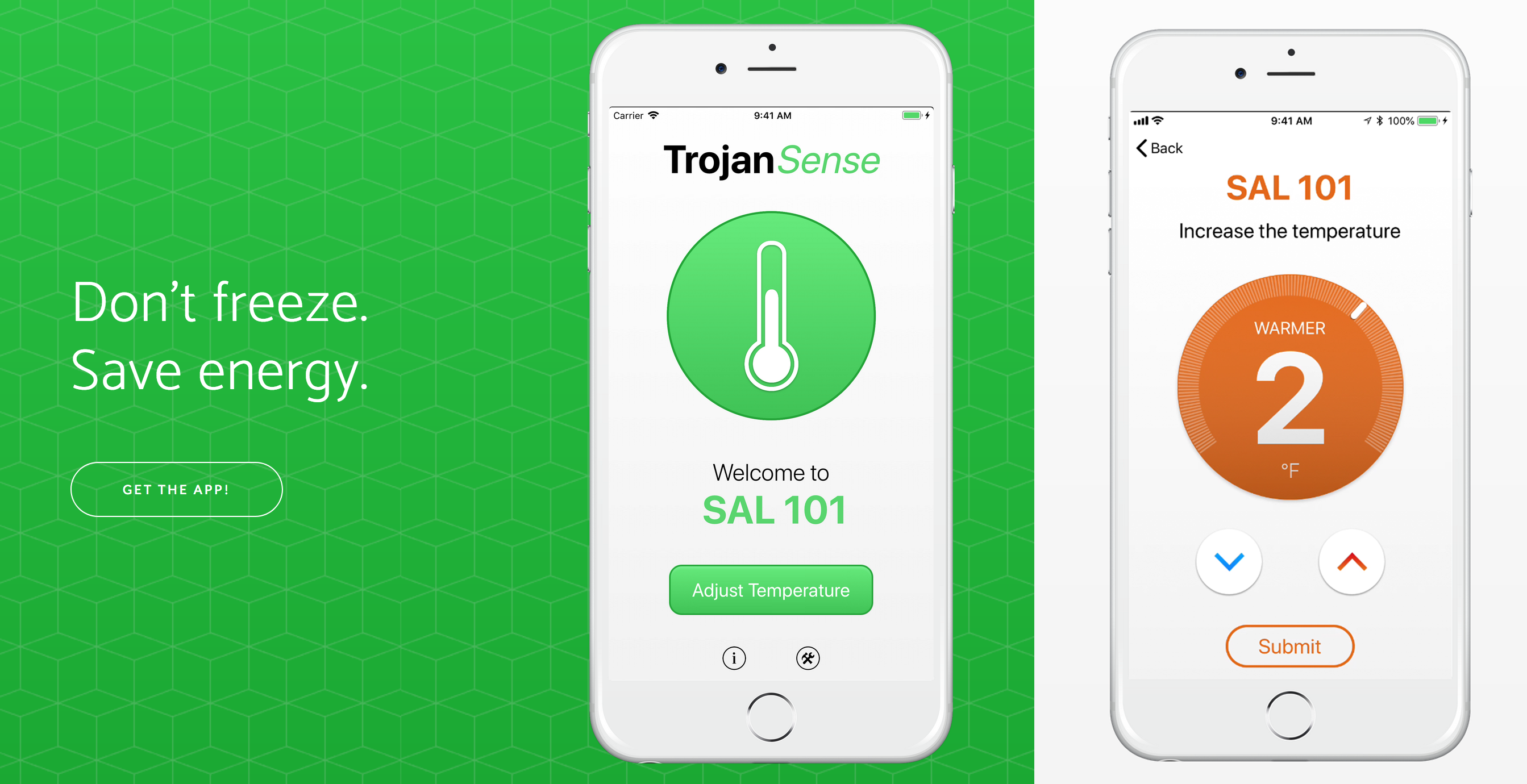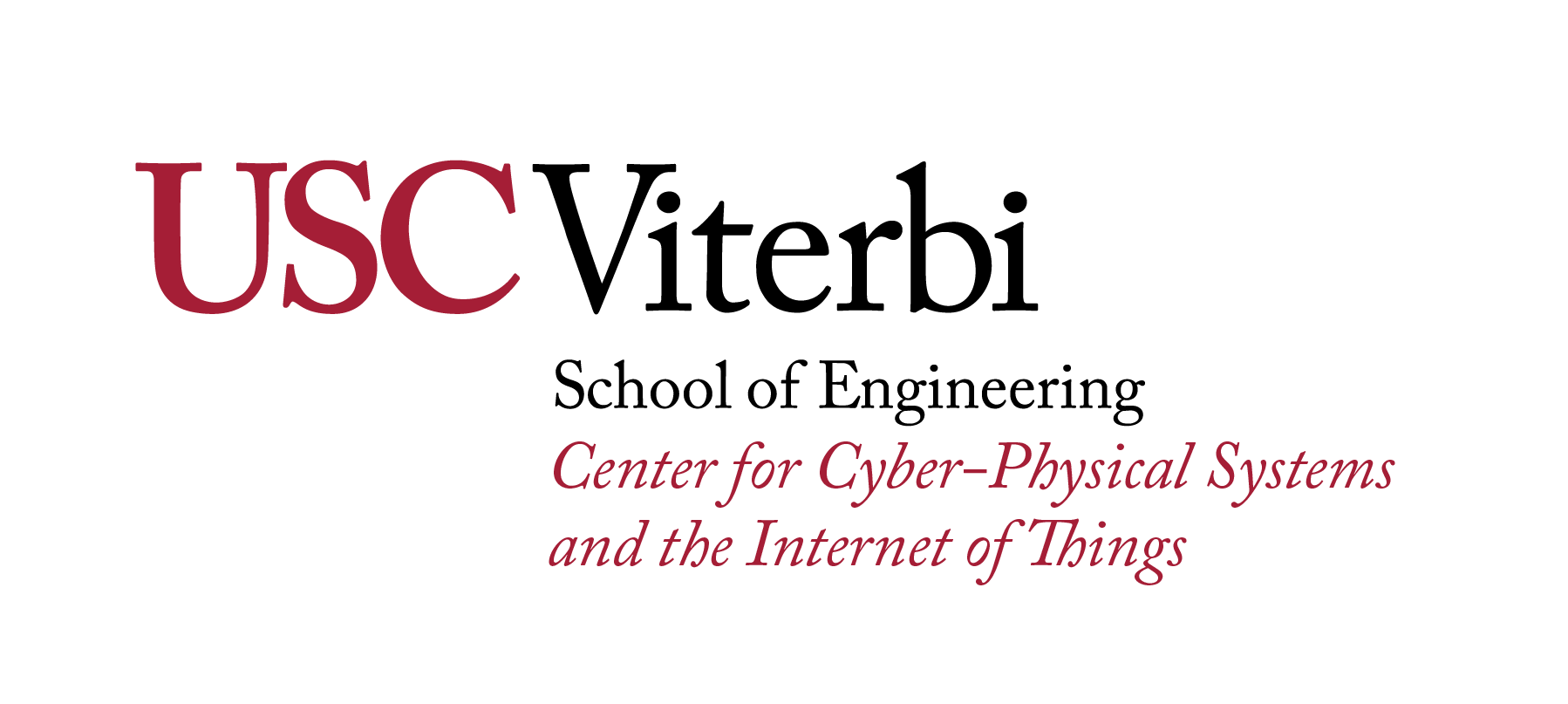USC Students and CCI Community Faculty Launch TrojanSense

TrojanSense is a participatory sensing tool developed by a team of USC students and Prof. Kyle Konis to engage students, staff and faculty as human sensors to identify spaces on campus that are overheated or overcooled beyond the comfort requirements of their occupants. Although increasingly sophisticated systems are being developed to collect, analyze, and use information to address building energy goals, there remains a lack of effective and scalable tools for putting energy data in context with people’s subjective assessments of thermal comfort. With a staff of over 20,000, more than 4,000 full time faculty, and 44,000 students, there is huge potential to leverage the diversity of people and buildings at USC to better understand the thermal preferences of the campus population and the energy savings potential of participatory sensing.
Using the TrojanSense iOS APP or webpage, users in any space on campus can indicate whether they want the current temperature of the space they are in to be lower, higher, or stay as it is by adjusting a “virtual thermostat.” At the campus scale, this feedback alone can provide valuable insight into what spaces are working and not working from the perspective of building occupants. And, with support from the USC Green Engagement Fund and the USC Chase L. Leavitt Graduate Building Science Endowment, a growing number of spaces on campus are now instrumented with Estimote beacons and IoT sensor nodes to automatically map the spatial location of responses and to place subjective feedback in context with objective measures of air temperature and relative humidity. Data-driven models of thermal comfort, developed from these spaces, have the potential to more closely align temperature setpoint ranges with the preferences of actual occupants. In addition to the potential to improve thermal comfort outcomes, setpoint adjustments that bring indoor temperatures closer to outdoor temperatures can help reduce the carbon emissions associated with the electricity consumption of campus Heating, Ventilation and Air Conditioning (HVAC) systems.
The long-term goal of the TrojanSense project is to enable the users of the campus to become active participants in campus-wide sustainability efforts and future demand-side management scenarios. A better understanding of the factors that impact thermal comfort across the existing stock of campus buildings also has the potential to inform the design of more environmentally responsive buildings that challenge the conventional space conditioning paradigm of forced-air HVAC systems, sealed building envelopes, and steady state indoor environments.
